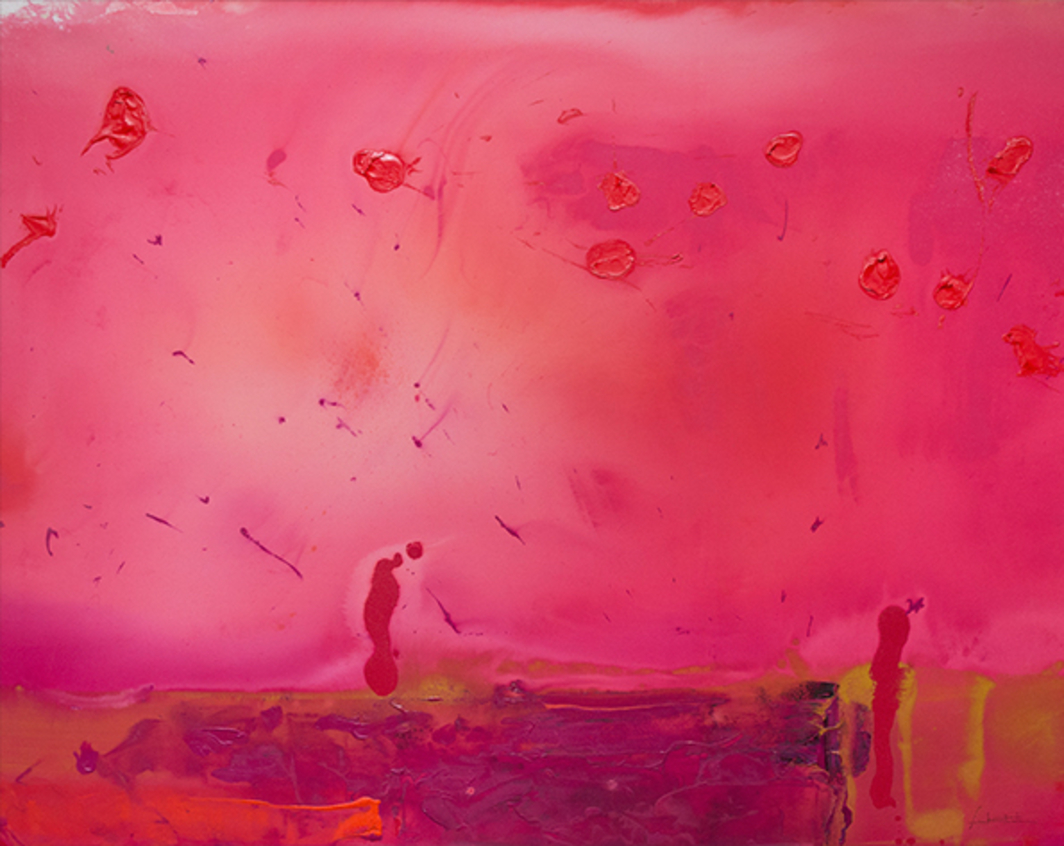How can we explore color’s amazing power for expressing emotions in art?

11 April 2023
A Series of Articles on the Elements of Painting: Color
How we can use color for expression
As artists, we can learn principles of color theory. Having basic color mechanics under our belt strengthens our painting, for sure. It’s always good to know which rules we’re breaking and why. Because yanking around on color relationships is the heart and soul of color in painting.
Creating Problems To Solve
For me, the real fun of painting begins when I can cut loose and play! When I break or ignore or bend the rules in favor of exploring a new thought or idea. When I say "I wonder if..." and discover something by launching into the effort. When I disrupt my own ideas. All this bending and disrupting creates a new visual problem to solve on the canvas. That's where the real juice is, where exciting new ideas are born or discovered.
More and more, I'm as interested in how color can shape a feeling as I am in how color can shape the composition.
I doubt I'm alone that I respond to "place" with an emotion. It might be sadness or anxiety or joy, wonder or awe or curiosity. Feelings happen in the most unexpected moments, in unexpected places or unexpected times.
It's these feelings that whisper to me the 'story' of a place or a moment. These are the nuances I can listen to, feel, smell, hear and observe. What colors are they? How does all that relate to the shape of color and light?
Painters from Western European Traditions
I'm interested in how the use of color in painting has changed over time, even in the last few centuries.
For example, the 19th century British painter J. M. W. Turner had a strong passion for using certain yellows. He was an English Romantic artist known for his expressive colorization.
Turner insisted on two particular yellows for his palette, available in his time. His luminous light enhances the powerful narrative in his paintings. Turner studied color theory, including German color theorist Goethe. (In his 1810 writing of Theory of Colors, Goethe had discussed combinations of colors. He wrote of the effects of putting yellow above much deeper colors.) Turner limited his palette to three colors, red, yellow and blue to study the effects of blending colors.
Claude Monet studied color with intensity in early 1900's France. “When you go out to paint, try to forget what objects you have before you, a tree, a house, a field or whatever. Merely think here is a little square of blue, here an oblong of pink, here a streak of yellow, and paint it just as it looks to you, the exact color and shape.”
From 1901 to 1904, Pablo Picasso painted in monochrome tones of blue. He was grieving the loss of his friend, the Spanish painter Carlos Casagemas. This era of his work became known as his 'blue period'. In 'The Old Guitarist' (1903) we see his use of cool blues to evoke sadness and despair.
Henri Matisse used color for expression. “The chief function of color should be to serve expression. Colour helps to express light, not the physical phenomenon, but the only light that really exists, that in the artist’s brain.”
Wassily Kandinsky wrote about his belief that colors and shapes could affect our mood and provoke a psychic vibration. “Color hides a power still unknown but real, which acts on every part of the human body.” He talked about the inner resonance of color, ascribing certain colors to certain feelings:
Yellow = “warm, cheeky and exciting, disturbing for people, attack, madness"
Green = "peace, stillness, passive, mix of yellow and blue"
Blue = "peaceful, supernatural, calming"
In the 1940’s and 50’s in New York City a style of Abstract Expressionist painting emerged known as “Color Field” painting. In this movement color becomes the subject in itself. This school included Mark Rothko. Rothko considered color to be a tool that served a greater purpose: to evoke our most basic emotions.
Helen Frankenthaler is one of the great American artists of the twentieth century. She played a central role in the transition from Abstract Expressionism to Color Field painting. Frankenthaler used color as her primary directive to 'find' the painting.
Contemporary painter Sheila Keefe Ortiz, plays rich yellows against cool neutrals. In her painting "First Daffodil", she conveys sunshine, rebirth, renewal.
This is a tiny sampling of how painters from western European influences have used color to evoke or express emotions.
In the future, I'm going to look more at art from our indigenous peoples in the US, and from Africa and South America. I want to learn what I can about those traditions and nuances of color in art.
How do you explore color in your work?
What challenges or successes have come up for you, with color? Does the medium you're working with change the conversation? Do colors you load on your palette drive the painting? Is the emotional or spiritual or healing effect of color a part of your work? I love hearing from artists about these things.
I love hearing from artists about these things. I invite you to join my facebook group Art and The Studio, and throw out questions or observations, or art issues you've experienced. I created the group because I wanted to have some dialog about the making of art, and being an artist. I look forward to seeing you there!
Best, Julia
Feature image: Helen Frankenthaler, "Red Shift", 1990